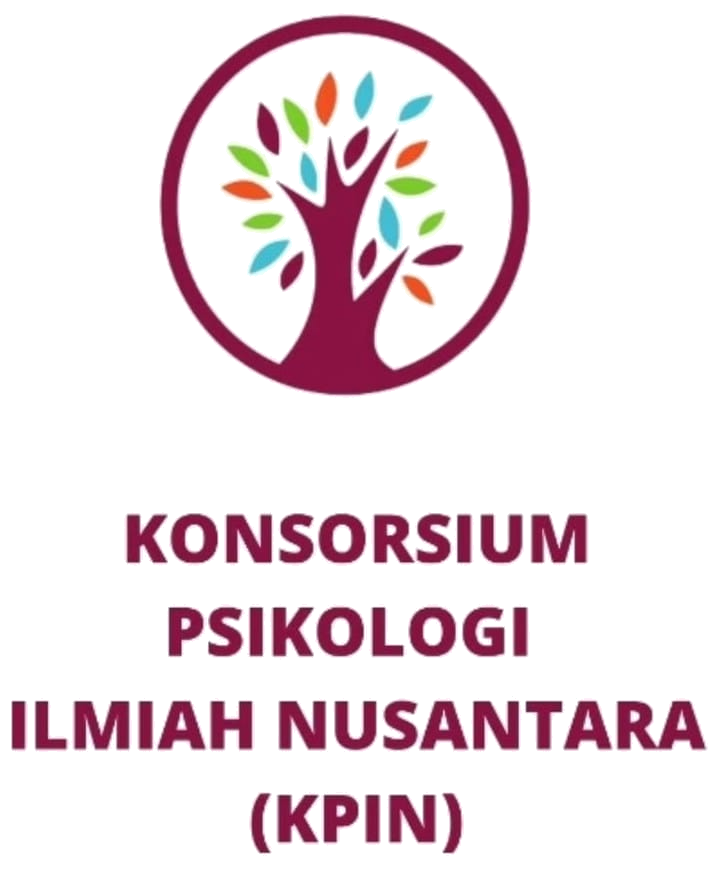Hubungan antara Core Beliefs, Rumination, Dukungan Sosial, dan Post Traumatic Growth pada Anak Usia Sekolah
DOI:
https://doi.org/10.35814/mindset.v8i02.328Keywords:
core beliefs, rumination, social support, posttraumatic growth, school-age childrenAbstract
Post-traumatic growth is one of those terms for positive change experienced as a result of the struggle with trauma which emphasize in transformation (Meyer, Grant, and Kilmer, 2011). Tedeschi and Calhoun (2004) also emphasize seismic event which caused psychological crisis because of the disruption of core beliefs so that post-traumatic growth could happen. The following research is to identified post-traumatic growth that happen in school-age children with horrible experience. Results showed that there is post-traumatic growth in school-age children with horrible experience. Increased core beliefs, rumination, and social support strengthen post-traumatic growth in school-age children with horrible experience.
References
Bonanno, G. A., Galea, S., Bucciarelli, A., & Vlahov, D. (2007). What predicts psychological resilience after disaster? The role of demographics, resources, and life stress. Journal of Consulting and Clinical Psychology, 75, 671-682.
Calhoun, L. G., Cann, A., Tedeschi, R. G., & McMillan, J. (2000) A Correlational test of the relationship between posttraumatic growth, religion, and cognitive processing. Journal of Traumatic Stress, 13(3).
Cann, A., Calhoun, L. G., Tedeschi, R. G., Kilmer, R. P., Gil-Rivas, V., Vishnevsky, T., & Danhauer, S. C. (2010). The Core Beliefs Inventory: A brief measure of disruption in the assumptive world. Anxiety, Stress, & Coping, 23(1), 19-34.
Cozby, P. C., Bates, S. (2012). Methods in behavioral research. New York: McGraw- Hill Higher Education.
Cryder, C. H., Kilmer, R. P., Tedeschi, R. G., & Calhoun, L. G. (2006). An exploratory study of posttraumatic growth in children following a natural disaster. American Journal of Orthopsychiatry, 76, 65-69.
Gordon, A. T. (2011). Assessing social support in children: Development and initial validation of the social support questionnaire for children (Doctoral dissertation). Louisiana State University, USA. Diunduh dari LSU Digital Commons.
Greenberg, M. A. (1995). Cognitive processing of traumas: The role of intrusive thoughts and reappraisals. Journal of Applied Social Psychology, 25, 1262-1296.
Harper, F. W. K., Schmidt, J. E., Beacham, A. O., Salsman, J. M., Averill, A. J., Graves, K. D., & Andrykowski, M. A. (2007). The role of social cognitive processing theory and optimism in positive psychosocial and physical behavior change after cancer diagnosis and treatment. Psycho- Oncology, 16, 79-91.
Heaney, C. A., & Israel, B. A. (2008). Social networks and social support. In Glanz, K., Rimer, B. K., & Viswanath, K. (Eds.), Health behavior and health education: Theory, research, and practice (pp. 189- 207). San Francisco, CA: John Wiley & Sons.
Hodas, G. R. (2006). Responding to childhood trauma: The promise and practice of trauma informed care. Statewide Child Psychiatric Consultant, Pennsylvania Office of Mental Health and Substance Abuse Services.
Hurlock, E. B. (1999). Psikologi perkembangan: Suatu Pendekatan Sepanjang Rentang Kehidupan (Ed 5.). Jakarta: Penerbit Erlangga.
Ickovics, J. R., Kershaw, T. S., Milan, S., Lewis, J. B., Meade, C. S., & Ethier, K. A. (2006). Urban teens: Trauma, posttraumatic growth, and emotional distress among female adolescents. Journal of Consulting and Clinical Psychology, 74(5), 841-850.
Irwanto. (2007). Trauma dan gangguan pascatrauma pada anak. Jakarta: Universitas Atma Jaya.
Janoff-Bullman, R. (1992). Shattered assumptions. New York: Free Press.
Janoff-Bullman, R. (2004). Posttraumatic growth: Three explanatory models. Psychological inquiry, 15(1), 30-34.
Kilmer, R. P., & Gil-Rivas, V. (2010). Exploring posttraumatic growth in children impacted by hurricane katrina: Correlates of the phenomenon and developmental considerations. Child Development, (81)4, 1211–1227.
Koltko-Rivera, M. E. (2000). The Worldview Assessment Instrument (WAI): The development and preliminary validation of an instrument to assess world view components relevant to counseling and psychoteraphy. Dissertation Abstracts International: Section B: The Scineces and Engineering, 61(4-B), 2266.
Koverola, C. (1995). Posttraumatic stress disorder. In R. T. Ammerman & M. Hersen (Eds.). Handbook of child behavioral therapy in the psychiatric setting (pp. 390-408). New York: John Wiley and Sons, Inc.
Martin, L. L., & Tesser, A. (1996). Some ruminative thoughts. In R. S. Wyer (Eds.), Advances in social cognition. Hillsdale, NJ: Lawrence Erlbaum Associates.
Meyerson, D. A., Grant, K. E., Carter, J. S., & Kilmer, R. P. (2011). Posttraumatic growth among children and adolescents: A systematic review. Clinical Psychology Review, 31, 949-964.
Milam, J. E., Ritt-Olson, R., & Unger, J. B. (2004). Posttraumatic growth among adolescents. Journal of Adolescent Research, 19(2), 192-204.
Prati, G., & Piertratoni, L. (2009). Optimism, social support, and coping strategies as factors contributing to posttraumatic growth: A meta-analysis. Journal of Loss and Trauma, 14, 364-388.
Rosenberg, V. F. (2009). Assessing the diathesis- stress model in pre- and early adolescent girls and an examination of core beliefs as predictors of depression (Doctoral dissertation). University of Texas, Austin.
Salter, E., & Stallard, P. (2004). Posttraumatic growth in child survivors of a road traffic accident. Journal of Traumatic Stress, 17(4), 335-340.
Schexnaildre, M. A. (2011) Predicting posttraumatic growth: Coping, social support, and posttraumatic stress in children and adolescents after hurricane katrina (Master thesis). Louisiana State University, USA. Diunduh dari LSU Digital Commons.
Tedeschi, R. G., & Calhoun, L. G. (1996). The posttraumatic growth inventory: Measuring the positive legacy of trauma. Journal of Traumatic Stress, 9, 455–471.
Tedeschi, R. G., & Calhoun, L. G. (1999). Facilitating posttraumatic growth: A clinician’s guide. Mahwah, NJ: Lawrence Erlbaum Associates, Inc.
Tedeschi, R. G., & Calhoun, L. G.. (2001). Posttraumatic growth: The positive lessons of loss. In R. A. Neimeyer (Eds.), Meaning reconstruction and the experience of loss (pp. 157-172). Washington, DC: American Psychology Association.
Tedeschi, R. G., & Calhoun, L. G. (2004). Posttraumatic growth: Conceptual foundations and empirical evidence. Mahwah, NJ: Lawrence Erlbaum Associates, Inc.
Van der Kolk, B. A. (2001) The assessment and treatment of complex PTSD. In R. Yehuda et al. (Eds.), Traumatic stress (Chapter 7). Washington, DC: American Psychiatric Press.
Vigil, J. M., & Geary, D. C. (2008). A preliminary investigation of family coping styles and psychological well-being among adolescent survivors of Hurricane Katrina. Journal of Family Psychology, 22, 176-180.
Woodward, C., & Joseph, S. (2003). Positive change processes and post-traumatic growth in people who have experienced childhood abuse: Understanding vehicles of change. Psychology and Psychotherapy: Theory, Research, and Practice, 76, 267–283.
Yaskowich, K. M. (2002). Posttraumatic growth in children and adolescent with cancer (Doctoral dissertation). University of Calgary, Canada. Diunduh dari https://prism.ucalgary.ca/bitstream/1880/4 1258/1/2002_Yaskowich.pdf












